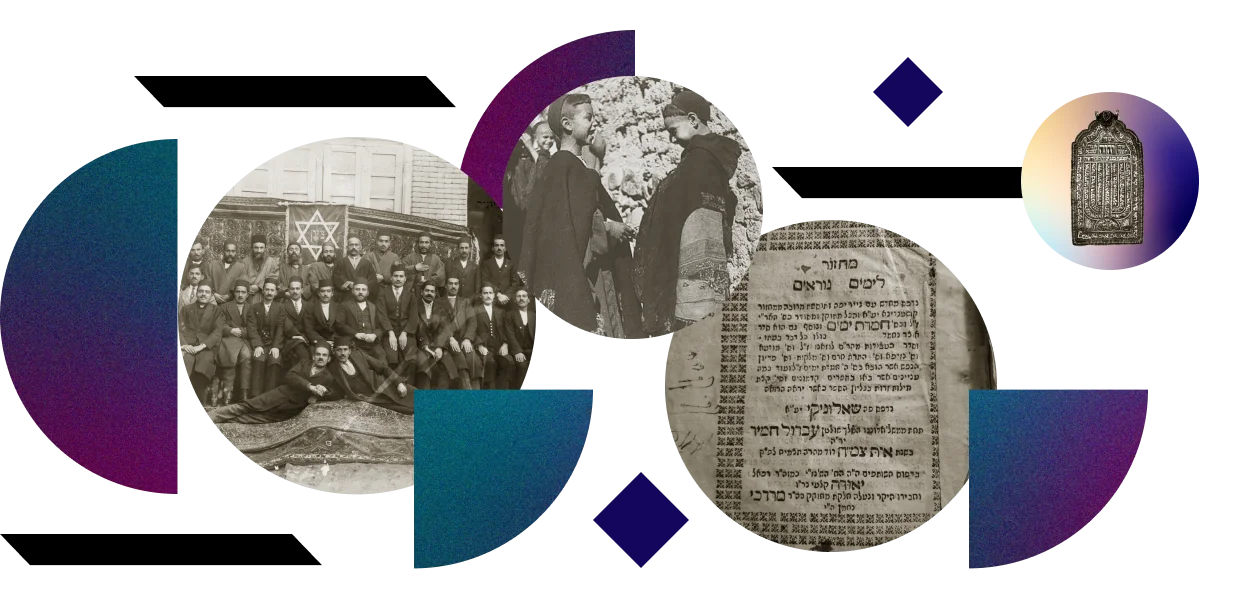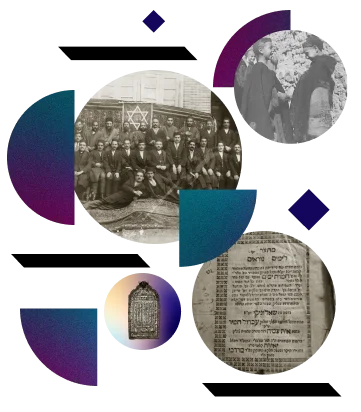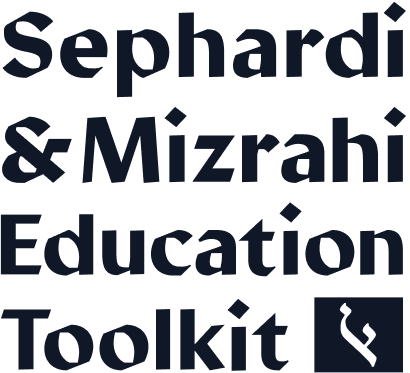

How to use this guide
This guide contains recommendations for shaping school cultures and curricula that are inclusive to Sephardi & Mizrahi students, families, and communities. To foster holistic change in your school, we encourage you not to focus only on content recommendations or policy suggestions; rather, the content recommendations and resources included in this guide should be considered in tandem with recommendations for policies, communication strategies, pedagogical methods, etc. All members of a school community must work together to shape the culture of the school.
The inclusion recommendations have been organized according to the role you play in your school community. Specific content recommendations and resources have been organized according to academic discipline via the page of recommendations for classroom teachers. None of the recommendation pages are intended to be comprehensive, nor are they intended to completely replace your existing policies and curricula. Use these recommendations with the specific needs of your school in mind, and incorporate, adjust, or ignore these recommendations as best befits your school community.
Before you explore the pages of recommendations, you are encouraged to take the self-assessment to see what changes may or may not be necessary in your school.
Unpacking your
school culture:
Who are “we”?
Unpacking your school culture: Who are “we”?
When you walk into an office building, you probably get a feeling, a vibe that communicates something about the work environment and the attitudes of the people in that space. You may not be able to describe that feeling or identify where it’s coming from, but you can sense it. Everything in an organizational environment sends intentional and unintentional messages about who the organizational members are, what they stand for, and what they value.
When educators in your school use the term “we” to describe people in your school community, who is included in that “we,” and who may be excluded? When people talk about Jews or the Jewish people, what are the images they have in mind? What messages are communicated to students and their families, intentionally or not, about who does or doesn’t belong?
This “we” can be hard to pin down. The following list includes categories you can examine and questions you can ask to evaluate what kinds of messages your school environment communicates about Jews from diverse backgrounds.
Self Assessment
How familiar are your teachers with the histories, halakhot, customs, and cultures of Jews from diverse backgrounds? What resources and/or trainings are available for teachers who would like to know more about diverse Jewish communities?
How familiar are your teachers with the histories, halakhot, customs, and cultures of Jews from diverse backgrounds? What resources and/or trainings are available for teachers who would like to know more about diverse Jewish communities?
Does your Jewish history curriculum address the histories and communities of diverse Jewish communities? To what extent are diverse communities discussed in modern settings?
Does your Jewish history curriculum address the histories and communities of diverse Jewish communities? To what extent are diverse communities discussed in modern settings?
Are the halakhot and minhagim of various communities included in the curriculum? Are the halakhot and minhagim of various communities given equal attention and time?
Are the halakhot and minhagim of various communities included in the curriculum? Are the halakhot and minhagim of various communities given equal attention and time?
How familiar are your teachers with the histories, halakhot, customs, and cultures of Jews from diverse backgrounds? What resources and/or trainings are available for teachers who would like to know more about diverse Jewish communities?
How familiar are your teachers with the histories, halakhot, customs, and cultures of Jews from diverse backgrounds? What resources and/or trainings are available for teachers who would like to know more about diverse Jewish communities?
Does your Jewish history curriculum address the histories and communities of diverse Jewish communities? To what extent are diverse communities discussed in modern settings?
Does your Jewish history curriculum address the histories and communities of diverse Jewish communities? To what extent are diverse communities discussed in modern settings?
Are the halakhot and minhagim of various communities included in the curriculum? Are the halakhot and minhagim of various communities given equal attention and time?
Are the halakhot and minhagim of various communities included in the curriculum? Are the halakhot and minhagim of various communities given equal attention and time?
When teachers and staff use expressions from a different language, like Yiddish, is it expected that all students will understand?
When teachers and staff use expressions from a different language, like Yiddish, is it expected that all students will understand?
Do students feel comfortable using expressions or slang from languages other than English or Hebrew, such as Ladino, Farsi, or Arabic? Are all languages equally acceptable?
Do students feel comfortable using expressions or slang from languages other than English or Hebrew, such as Ladino, Farsi, or Arabic? Are all languages equally acceptable?
Do students feel comfortable pronouncing the Hebrew language in ways that feel natural to their cultural backgrounds? Are all pronunciations equally acceptable?
Do students feel comfortable pronouncing the Hebrew language in ways that feel natural to their cultural backgrounds? Are all pronunciations equally acceptable?
Do teachers and staff have difficulty pronouncing certain students’ names, especially names that indicate they are from non-Ashkenazic communities? What efforts do teachers and staff make to be able to pronounce all students’ names correctly?
Do teachers and staff have difficulty pronouncing certain students’ names, especially names that indicate they are from non-Ashkenazic communities? What efforts do teachers and staff make to be able to pronounce all students’ names correctly?
When teachers and staff use expressions from a different language, like Yiddish, is it expected that all students will understand?
When teachers and staff use expressions from a different language, like Yiddish, is it expected that all students will understand?
Do students feel comfortable using expressions or slang from languages other than English or Hebrew, such as Ladino, Farsi, or Arabic? Are all languages equally acceptable?
Do students feel comfortable using expressions or slang from languages other than English or Hebrew, such as Ladino, Farsi, or Arabic? Are all languages equally acceptable?
Do students feel comfortable pronouncing the Hebrew language in ways that feel natural to their cultural backgrounds? Are all pronunciations equally acceptable?
Do students feel comfortable pronouncing the Hebrew language in ways that feel natural to their cultural backgrounds? Are all pronunciations equally acceptable?
Do teachers and staff have difficulty pronouncing certain students’ names, especially names that indicate they are from non-Ashkenazic communities? What efforts do teachers and staff make to be able to pronounce all students’ names correctly?
Do teachers and staff have difficulty pronouncing certain students’ names, especially names that indicate they are from non-Ashkenazic communities? What efforts do teachers and staff make to be able to pronounce all students’ names correctly?
When speakers are brought in to address the students, which communities and roles do those speakers represent? Are all students’ backgrounds represented by the range of speakers?
When speakers are brought in to address the students, which communities and roles do those speakers represent? Are all students’ backgrounds represented by the range of speakers?
When Jewish music is played at school events, to what extent do the musical styles align with the cultures of all students? Are all students’ cultures represented in the various song choices?
When Jewish music is played at school events, to what extent do the musical styles align with the cultures of all students? Are all students’ cultures represented in the various song choices?
When Jewish music is played at school events, do the singers all pronounce Hebrew in similar ways? Are different forms of pronunciation represented in the music?
When Jewish music is played at school events, do the singers all pronounce Hebrew in similar ways? Are different forms of pronunciation represented in the music?
Food
At school events, what does “Jewish food” look like? Whose traditions are represented by the menu options?
At school events, what does “Jewish food” look like? Whose traditions are represented by the menu options?
Many Jewish holidays are associated with specific foods, which may differ based on people’s geographic and cultural backgrounds. Are foods from different parts of the world included as part of holiday celebrations?
Many Jewish holidays are associated with specific foods, which may differ based on people’s geographic and cultural backgrounds. Are foods from different parts of the world included as part of holiday celebrations?
When speakers are brought in to address the students, which communities and roles do those speakers represent? Are all students’ backgrounds represented by the range of speakers?
When speakers are brought in to address the students, which communities and roles do those speakers represent? Are all students’ backgrounds represented by the range of speakers?
When Jewish music is played at school events, to what extent do the musical styles align with the cultures of all students? Are all students’ cultures represented in the various song choices?
When Jewish music is played at school events, to what extent do the musical styles align with the cultures of all students? Are all students’ cultures represented in the various song choices?
When Jewish music is played at school events, do the singers all pronounce Hebrew in similar ways? Are different forms of pronunciation represented in the music?
When Jewish music is played at school events, do the singers all pronounce Hebrew in similar ways? Are different forms of pronunciation represented in the music?
Food
At school events, what does “Jewish food” look like? Whose traditions are represented by the menu options?
At school events, what does “Jewish food” look like? Whose traditions are represented by the menu options?
Many Jewish holidays are associated with specific foods, which may differ based on people’s geographic and cultural backgrounds. Are foods from different parts of the world included as part of holiday celebrations?
Many Jewish holidays are associated with specific foods, which may differ based on people’s geographic and cultural backgrounds. Are foods from different parts of the world included as part of holiday celebrations?
Which siddurim are available for students? Which liturgies are available or not available for students? Are sufficient siddurim of different liturgies available for all students who want to use them? (Nusah Ashkenaz, Nusah Sefard, Nusah Edot Hamizrach, etc.)
Which siddurim are available for students? Which liturgies are available or not available for students? Are sufficient siddurim of different liturgies available for all students who want to use them? (Nusah Ashkenaz, Nusah Sefard, Nusah Edot Hamizrach, etc.)
When students lead prayer services, which liturgies and tunes are used? Do students have opportunities to lead with their preferred liturgies and tunes?
When students lead prayer services, which liturgies and tunes are used? Do students have opportunities to lead with their preferred liturgies and tunes?
Which siddurim are available for students? Which liturgies are available or not available for students? Are sufficient siddurim of different liturgies available for all students who want to use them? (Nusah Ashkenaz, Nusah Sefard, Nusah Edot Hamizrach, etc.)
Which siddurim are available for students? Which liturgies are available or not available for students? Are sufficient siddurim of different liturgies available for all students who want to use them? (Nusah Ashkenaz, Nusah Sefard, Nusah Edot Hamizrach, etc.)
When students lead prayer services, which liturgies and tunes are used? Do students have opportunities to lead with their preferred liturgies and tunes?
When students lead prayer services, which liturgies and tunes are used? Do students have opportunities to lead with their preferred liturgies and tunes?
Do students use textbooks and sources that contain content about the history and culture of diverse groups of people?
Do students use textbooks and sources that contain content about the history and culture of diverse groups of people?
Do students use textbooks and sources that represent a range of geographic and cultural perspectives?
Do students use textbooks and sources that represent a range of geographic and cultural perspectives?
Which Jewish texts are available for students in the library or in the classrooms? Are texts written by authors from a range of geographic areas and halakhic traditions?
Which Jewish texts are available for students in the library or in the classrooms? Are texts written by authors from a range of geographic areas and halakhic traditions?
Which historical and/or biographical texts are available for students in the library or in the classrooms? Are texts written by authors from a range of geographic areas and cultural traditions?
Which historical and/or biographical texts are available for students in the library or in the classrooms? Are texts written by authors from a range of geographic areas and cultural traditions?
Which famous figures are depicted on the walls of the classroom and hallways? Do they represent a range of cultural backgrounds?
Which famous figures are depicted on the walls of the classroom and hallways? Do they represent a range of cultural backgrounds?
Which students’ pictures are on the walls of the school and in advertising and promotional materials? Are students from different backgrounds represented?
Which students’ pictures are on the walls of the school and in advertising and promotional materials? Are students from different backgrounds represented?
Do students use textbooks and sources that contain content about the history and culture of diverse groups of people?
Do students use textbooks and sources that contain content about the history and culture of diverse groups of people?
Do students use textbooks and sources that represent a range of geographic and cultural perspectives?
Do students use textbooks and sources that represent a range of geographic and cultural perspectives?
Which Jewish texts are available for students in the library or in the classrooms? Are texts written by authors from a range of geographic areas and halakhic traditions?
Which Jewish texts are available for students in the library or in the classrooms? Are texts written by authors from a range of geographic areas and halakhic traditions?
Which historical and/or biographical texts are available for students in the library or in the classrooms? Are texts written by authors from a range of geographic areas and cultural traditions?
Which historical and/or biographical texts are available for students in the library or in the classrooms? Are texts written by authors from a range of geographic areas and cultural traditions?
Which famous figures are depicted on the walls of the classroom and hallways? Do they represent a range of cultural backgrounds?
Which famous figures are depicted on the walls of the classroom and hallways? Do they represent a range of cultural backgrounds?
Which students’ pictures are on the walls of the school and in advertising and promotional materials? Are students from different backgrounds represented?
Which students’ pictures are on the walls of the school and in advertising and promotional materials? Are students from different backgrounds represented?
Are different cultural backgrounds represented among the faculty and school leadership? What opportunities are available for faculty and/or school leaders who want to learn more about other cultures?
Are different cultural backgrounds represented among the faculty and school leadership? What opportunities are available for faculty and/or school leaders who want to learn more about other cultures?
Are different cultural backgrounds represented among parent leaders and on parent committees? What opportunities are available for parents from different cultural backgrounds to interact and learn more about each other?
Are different cultural backgrounds represented among parent leaders and on parent committees? What opportunities are available for parents from different cultural backgrounds to interact and learn more about each other?
Are different cultural backgrounds represented among student leaders? Do students of all backgrounds participate in student clubs?
Are different cultural backgrounds represented among student leaders? Do students of all backgrounds participate in student clubs?
Are different cultural backgrounds represented on the school board and other lay leadership committees?
Are different cultural backgrounds represented on the school board and other lay leadership committees?
Are different cultural backgrounds represented among the faculty and school leadership? What opportunities are available for faculty and/or school leaders who want to learn more about other cultures?
Are different cultural backgrounds represented among the faculty and school leadership? What opportunities are available for faculty and/or school leaders who want to learn more about other cultures?
Are different cultural backgrounds represented among parent leaders and on parent committees? What opportunities are available for parents from different cultural backgrounds to interact and learn more about each other?
Are different cultural backgrounds represented among parent leaders and on parent committees? What opportunities are available for parents from different cultural backgrounds to interact and learn more about each other?
Are different cultural backgrounds represented among student leaders? Do students of all backgrounds participate in student clubs?
Are different cultural backgrounds represented among student leaders? Do students of all backgrounds participate in student clubs?
Are different cultural backgrounds represented on the school board and other lay leadership committees?
Are different cultural backgrounds represented on the school board and other lay leadership committees?






